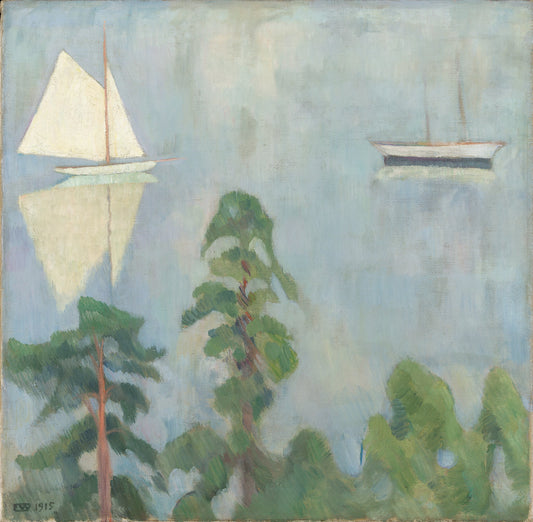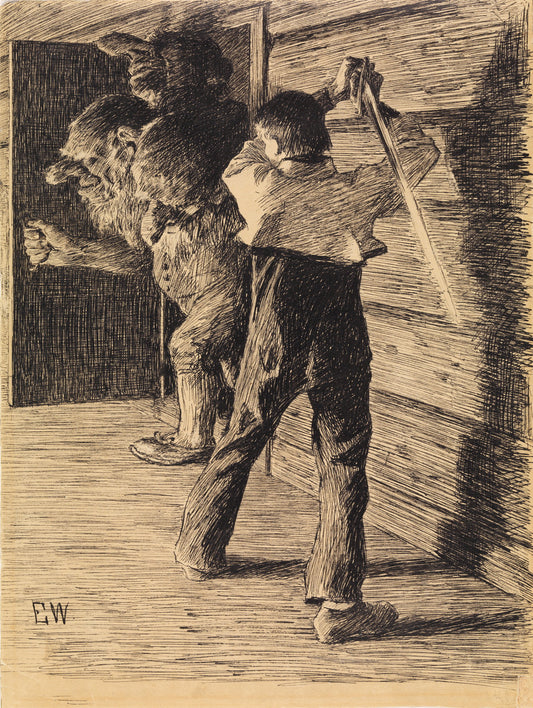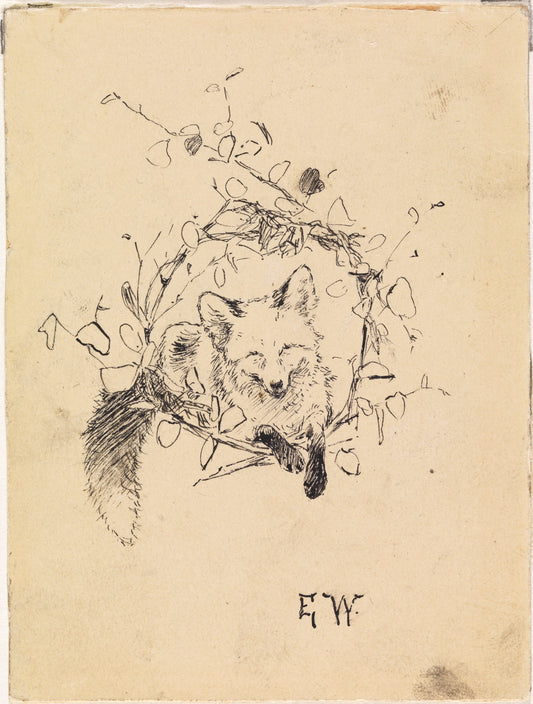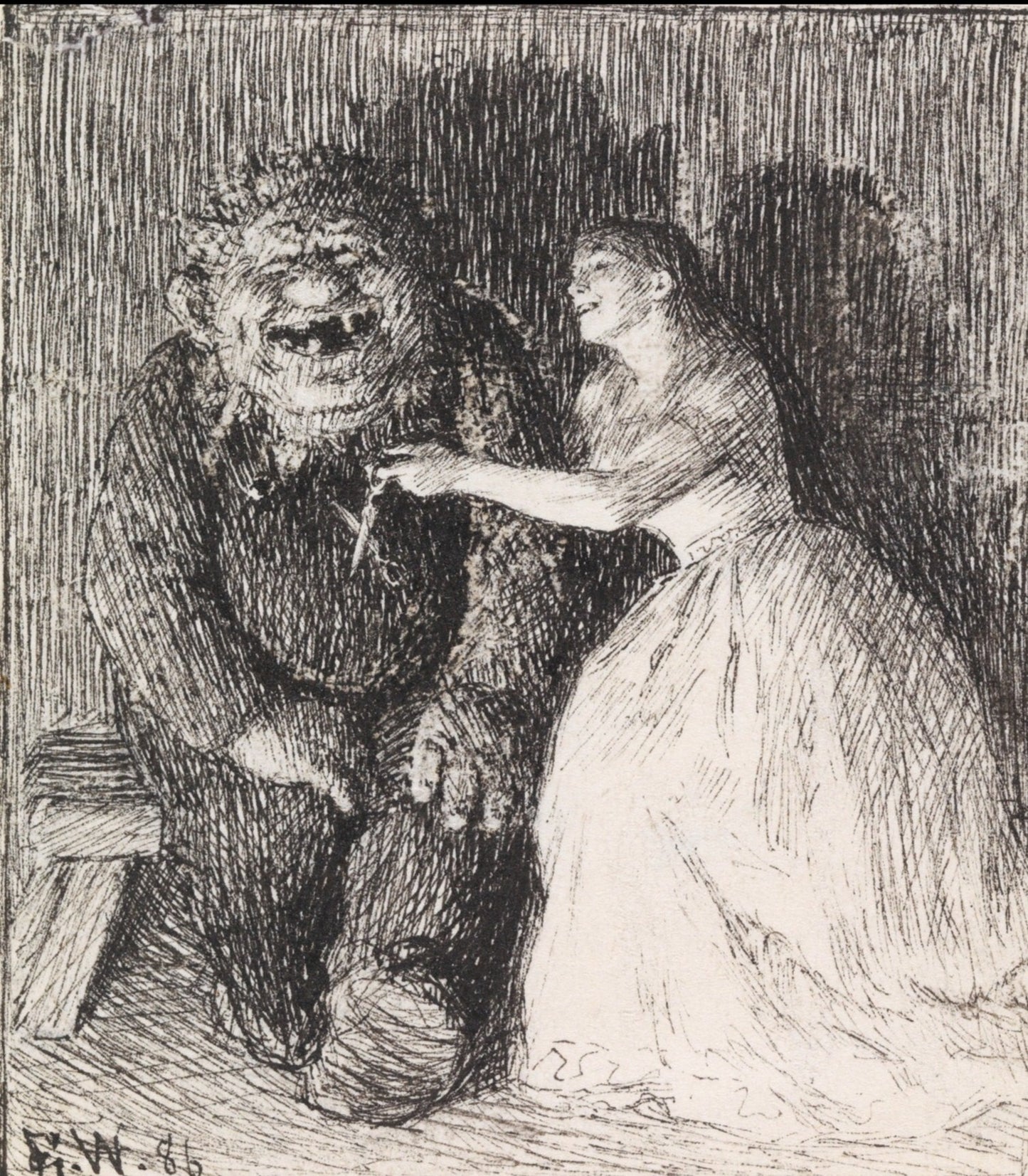Erik Werenskiold
Then they both laughed heartily
Then they both laughed heartily
Pickup available at DÁIDDA galleri & printlab
Usually ready in 2-4 days
High-quality reproductions from the National Museum's collection. Posters by DAIDDA are printed on Litho White Matt - 230 gram photo paper in premium quality. Artprints by DAIDDA provide outstanding colors, sharpness and durability in museum quality - printed on Moab Entrada Natural 300 gram cotton art paper. Printed on a matte surface with scratch-resistant pigment ink.
About the original:
There is no doubt about the cozy atmosphere between the princess and the troll, where they sit inside the mountain and laugh at the suitor whom she has put to the test.
"'Now a new suitor has arrived who wants me, my friend,' said the king's daughter. 'He is young and beautiful; but I don't want anyone else but you', she said, making herself attractive to the mountain troll. 'Then I put him to the test, and there is the scissors he was supposed to hide and look after, look after it now!' she said. Then they both laughed heartily…”
Together with the content, the style contributes to a condensed atmosphere in the small drawing. The fairy tale drawings were made in the same size as they were to be printed in. They were transferred to xylography (wooden engraving) for reproduction in a book, and Erik Werenskiold has taken this into account in the line drawing. The varied shading gives life to the figures, and the contrast between light and shadow reinforces the contradictions in the motif.
In 1878, Werenskiold was commissioned by P. Chr. Asbjørnsen to illustrate some of the folk tales. In addition to being one of Norwegian art history's foremost draftsmen, Werenskiold, together with Theodor Kittelsen, has contributed to visualizing the notions of fairy-tale figures so that they have gained a strong position in Norwegian cultural history.
The museum's collection is rich in fairy tale drawings. For "Følgesvennen" there are eight drawings, including three preliminary works, in the collection. This drawing was purchased in 1888.
Text: Møyfrid Tveit
From "Highlights. Art from Antiquity to 1945", The National Museum 2014, ISBN 978-82-8154-084-2
Date: 1886
Other titles: Then they both laughed heartily (ENG)
Designation: Drawing
Material and technique: Pen on paper
Technique: Pen
Material: Paper
Dimensions: 99 x 86 mm
Subject: Visual arts
Classification: 532 - Visual arts
Motif type: Fairy tales and legends
Acquisition: Purchased 1888
Inventory no.: NG.K&H.B.05137
Part of exhibition: Erik Werenskiold (1855-1938), 2011
Registration level: Single object
Owner and collection: The National Museum of Art, Architecture and Design, Visual Art Collections
Photo: Ivarsøy, Dag Andre
Shipping and returns
Shipping and returns
Shipping: We deliver to Scandinavia, the EU, the USA and several other countries. Please contact us if your country is not listed and we will try to arrange delivery.
Delivery time: 2-5 days within Norway, 7 days in Europe, 14 days globally.
Packaging: Our products are made to order and sent rolled in environmentally friendly packaging.
Customs Fees: International orders may be subject to customs fees, which are not included in shipping costs.
Return policy: You can return images within 14 days. See our returns page for more information.
Secure Payment: We never store your payment details. See our privacy policy for details.
See all works
-
"Huttetu! here smells so Christian man's blood," said the troll
Vendor:Erik WerenskioldRegular price From 150,00 NOKRegular priceUnit price per -
Then they both laughed heartily
Vendor:Erik WerenskioldRegular price From 150,00 NOKRegular priceUnit price per
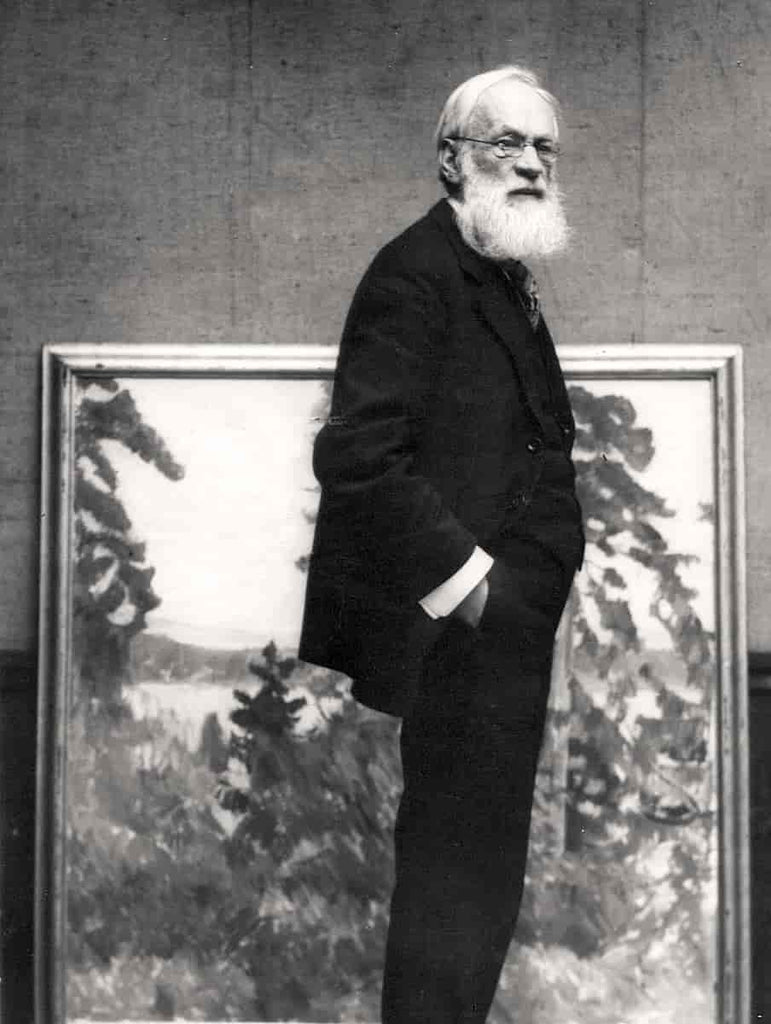
Erik Werenskiold
Erik Werenskiold was a Norwegian painter and draftsman known for his naturalistic and nationally oriented paintings of folk life in the 1880s. He is also known for the illustrations for Norwegian folk tales by Asbjørnsen and Moe and for Snorre's royal sagas. In 1905 he changed his style to a formally simplified and decorative style inspired by Paul Cézanne. Werenskiold was born in Eidskog and grew up in Kongsvinger.
He first studied under Julius Middelthun at the Art School in 1873 and later under Wilhelm Lindenschmit in Munich from 1876 to 1877. Werenskiold became convinced of the superiority of French plein air painting after seeing an exhibition by Charles François Daubigny in Munich in 1879. This led to the colors i Werenskiold's pictures became brighter, and he began to move towards naturalism. Werenskiold traveled to Paris in 1881 to study French naturalistic art more closely and traveled there annually until 1885. Werenskiold spent time in Norway, especially in Telemark, when he was not in Paris. It was here that he created his modern, realistic paintings of folk life and depicted children and people in the open air.
He was seen as an innovator of national painting through his depictions of Norwegian folk types and nature in Telemark. Werenskiold was also a skilled portrait painter and painted many characteristic portraits of famous Norwegians, including Bjørnstjerne Bjørnson, Edvard Grieg and Henrik Ibsen. Werenskiold was one of the most significant Norwegian artists of his time and has had a great influence on Norwegian art.


